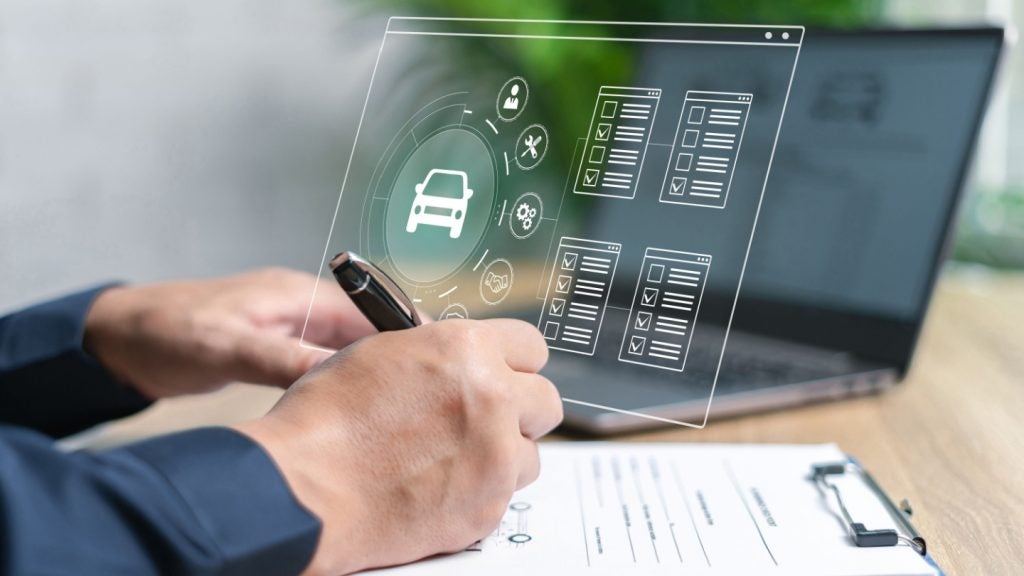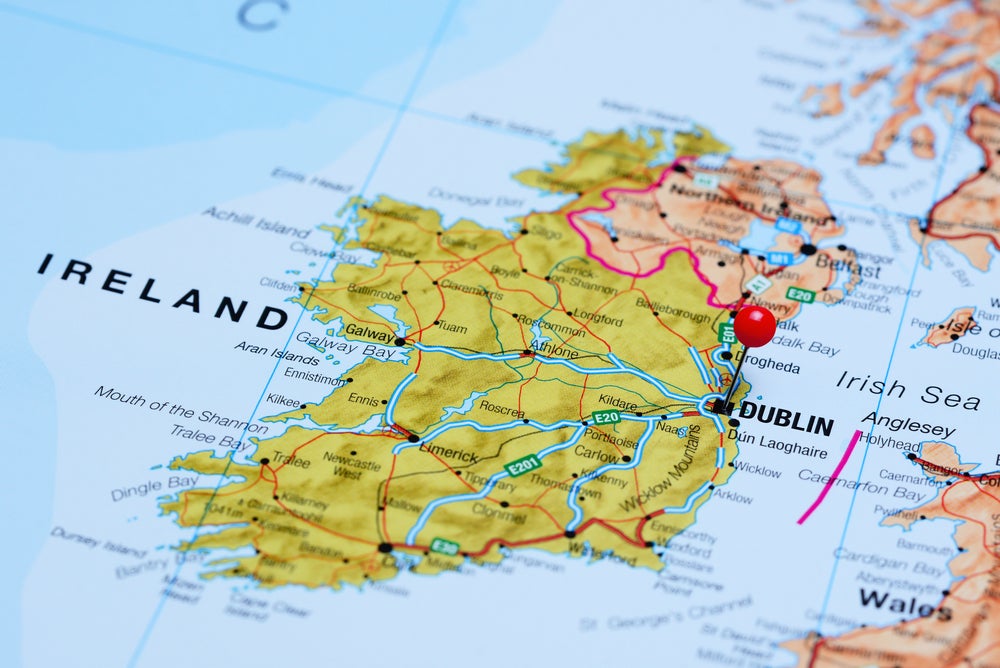
Telematics has long been a feature of fleet monitoring, but its potential for private use is rising. Saad Ahmed investigates the developing technology, its potential uses in motor finance, and its possible role in an increasingly interconnected world.
Telematics is well known for its use in calculating insurance premiums. However, as the technology develops, and demand for connectivity in the car market increases, telematics is increasingly being used in different ways.
According to online statistics provider Statista, the global telematics market is predicted to reach $40bn (£32.3bn) in 2016, up from $15bn from 2011.
“By the end of 2015 we saw 12 million telematics policies globally, and by the end of 2020, it will be 93 million. It’s growing very fast,” says Jonathan Hewett, group chief marketing officer at Octo Telematics.
Though traditionally mostly known for the classic ‘black box’, telematics technology extends beyond this and increasingly involves devices such as windscreen-mounted units and mobile phone apps designed to monitor a vehicle’s driving data.
While fleet operators use telematics to monitor vehicles, it is also poised to make further inroads into the private car market – and beyond the realms of insurance.
Motor Finance spoke to a number of telematics companies and consultants about the technological developments, the adoption of telematics, and how it could impact motor finance.
How well do you really know your competitors?
Access the most comprehensive Company Profiles on the market, powered by GlobalData. Save hours of research. Gain competitive edge.

Thank you!
Your download email will arrive shortly
Not ready to buy yet? Download a free sample
We are confident about the unique quality of our Company Profiles. However, we want you to make the most beneficial decision for your business, so we offer a free sample that you can download by submitting the below form
By GlobalDataWith the rise of usership in the automotive industry as PCP and PCH grow, telematics and the data it produces could fundamentally change how aspects of motor finance are calculated.
Benefits to fleets
Large-scale use of telematics is currently tied to fleet markets. Companies look to telematics to drive fleet efficiency and manage costs. Hewett explains that data provided by telematics can allow businesses to reduce expenditure.
“The bottom line is that it reduces the total cost of ownership from a fleet provider’s perspective.
“In simple terms, the more data and information that a fleet operator has about the fleet of vehicles, how, where, and when they are being used, the better they can optimise the cost.” .
Jeremy Gould, vice-president sales Europe at TomTom Telematics, states that operating a fleet often represents a large total business expenditure. By utilising telematics data, Gould argues costs can be reduced through greater efficiency of use.
“Telematics can have an impact on 40% of the total cost of ownership of a vehicle. From fuel to insurance and maintenance costs, there are some significant savings to be had by adopting telematics within the business,” Gould says.
Graeme Banister of Frost & Sullivan agrees, and cites fuel costs as a key factor.
“A large chunk of the cost of a vehicle is the fuel. If drivers modify their behaviour they’ll use 10% less fuel; this means a saving for the business,” he says.
However, financial considerations are not necessarily the sole reason why companies with fleets may decide to use telematics.
Hewett says monitoring and recording driver behaviour is not the sole way in which fleet operators can minimise costs and promote safety. He argues that a car’s health can be recorded through the systems.
“For fleets, depending on the type of technology you’re using, being able not to just see driving data, but vehicle health and preventative diagnostics, [provides] beneficial information,” Hewett says.
Sam Chapman, chief innovator, co-founder and director of The Floow, a Sheffield-based telematics company, argues that safety concerns are also key for fleet customers.
“You have a duty of care. You have a legal duty to ensure, in a fleet, that you understand the risks,” Chapman explains.
“Many fleets want telematics for that, many choose it for cost optimisation of fuel costs, but increasingly safety is becoming a prime concern.”
Drive and punishment?
For private drivers, telematics is associated with ‘black box insurance’, in which driving quality is used to calculate premiums. As the technology improves and greater variables are calculated, different models of how telematics could impact private drivers are being developed.
While insurance premiums affect drivers financially, the potential for telematics data to further impact vehicle ownership and usage costs is being realised. As telematics data is used to calculate driver risk in insurance, could the same apply to motor finance?
The rise of usership models such as PCP and PCH opens up the opportunity for this. The idea that differing rates could be charged for customers based on their driving trends does not seem to be out of the question. Determining pricing for PCP deals based on mileage, Hewett suggests, could result from this.
“You can do very accurate mileage-based PCPs,” Hewett says.
The idea of a driver performance profile that could affect how PCP deals are calculated is a significant consideration for telematics companies. Hewett, for example, mentions the OctoU programme, where users download an app that records their driver behaviour.
The score, he says, is used for insurance purposes, but “potentially, that score or base of data can be used for finance or leasing providers as well.”
Chapman argues that telematics could be used to calculate pricing for repeat PCH users based on their impact on the vehicles.
“[Telematics data] is going to influence the organisation responsible for those vehicles. If you have a telematically enabled fleet of hire vehicles, those vehicles are going to be tracking the behaviour, what’s going on, and how these vehicles are operated.
“If you’re a repeat user, then that should probably affect your pricing,” he says.
Chapman ties this to the financial impact that certain forms of driving may have on vehicles, causing a knock-on financial impact due to maintenance costs.
He says that companies offering PCH are beginning to look at this, and there is potential, through pricing, to pass costs onto the drivers responsible.
“If you get large numbers of high-mileage drivers, you get different wear on the vehicles. If you prioritise the maintenance around the type of usage data, it allows you to mitigate against the lost costs, and also price those more appropriately.”
The financial ‘reward and punishment’ model already entrenched in insurance could, it seems, slip into the motor finance market.
However, the interviewees stress that telematics driving data is used to help drivers themselves by understanding their performance and how it may be improved, and not simply as a form of punishment.
“It would need to be done in a way that is basically helping the person to get better. You’re pointing these things out to people, but you’re not prejudicing them,” Banister adds.
“There is data spewing out of vehicles right now,” Banister says. “And therein lies discussions about who owns the data. Hopefully at one point everyone will just get together and sort this out.”
In the automotive space, a battle between privacy and convenience will play out in the field of telematics.
“Telematics data can identify when your car is approaching a fault and deal with that quicker, provide an over-the-year update, book a service or replacement part. It’s about the convenience,” Banister says.
The acceleration of telematics in the private space is opening up questions about the benefits of such data and what it’s used for. The passing of data to third parties is a topic of discussion. The fate of the data, once collected, varies from its use to warn of damage, schedule maintenance, and inform customers of their driving behaviour.
“Attitudes are changing towards telematics. There are some clear benefits for drivers. It’s a tool that helps them to drive more safely.
“At TomTom Telematics we’re also providing tools to give the driver more feedback about how they’re actually driving, alerting them to ‘driving incidents’, and actually providing them with driver scores that help them to see where they’re performing, also against their peers,” Gould says.
Telematics data and how it is shared is linked to consent, and as the service aspects of telematics data emerge, in which location information is used, these questions will continue to be raised.
It is suggested that drivers could benefit financially from this information being passed to a third party.
“There’s scope for that as long as the privacy detail and information is suitable for such processing.
“We have products in the US whereby at the end of every journey, you get a discount offer for where you have arrived, at a level dependent on how well you drove to get there. If you drive well, you get a really good discount; if you drove recklessly, you get nothing,” Chapman explains.
“That leads to a strong encouragement of good behaviour, but it also leads to offers and deals that people start to appreciate. Rather than just telematics monitoring, it’s actually a means to do something else.”
Chapman stresses the importance of consent: “All these have to be consent and opt-in models. You can’t reuse that information for marketing without consent. Data protection is worldwide. What you can’t do is link it to an individual, and [for example] put up a billboard with targeted advertising.”
But, fundamentally, the telematics companies argue that safety is the main benefit to be had from installing telematics.
“If the worst does happen, telematics provides you with the best possible help. That is part of the value calculation. It’s not just about prices and discounts, it’s about safety and security,” Hewett stresses.
The issue of access to data also links to physical safety. While assurances may be given by some telematics providers that consent is sought, hackers seeking to access data without consent must still be guarded against.
Hackers may seek to capture location data, which could compromise the safety of a driver, or physical control of the vehicle itself by accessing connected technology.
Examples in recent years have exposed vulnerabilities in technology used in cars allowing them to be remotely accessed and controlled.
As an example, researchers at the University of California, San Diego recently managed to activate the brakes on a Corvette by sending a text message.
Gould seeks to assure that safety concerns are of importance, “It’s something that we’re aware of and take very seriously within telematics, and we’ve also tested our products against this,” before adding, “I wouldn’t like to comment further.”
Hewett, however, is prepared to elaborate, explaining that his company has developed telematics devices that improve vehicles’ safeguards against such attacks.
Hewett adds that OEMs’ technology platforms are likely to be more attractive to hackers.
“On-board diagnostics devices are the ones that are potentially hackable, but none of our devices have ever been hacked. Hackers would be more interested in hacking an OEM’s platform,” he adds.
While absolute safety is never something that can be assured without question, the telematics providers interviewed are keen to highlight the safety of their particular systems, and their continuing commitment to security.
Driving forward
Looking ahead, as technology becomes more sophisticated, and the much-touted Internet of Things (IoT) continues to evolve, there are questions about how telematics could play a role in this.
The IoT refers to a network of physical objects which interact through sharing data. On a metropolitan scale, this can be manifested in the ‘smart city’.
Hewett explains that, indeed, telematics data could have a role in the IoTs. “If you think about the IoT, telematics is a business model that really works and creates value. It is adjacent to, extensible to, the smart city. Understanding where vehicles are, how they are being driven, and whether they are obeying speed limits, relies on connectivity, and telematics data can really deliver for the smart city agenda,” Hewett says.
Asked whether telematics data could help inform planning and transport decisions, Chapman explains that The Floow is using anonymised telematics data to understand the driving environment in urban spaces.
“You can reuse the information in an anonymous form. One of the things we’re involved in is looking at anonymous information after it’s been collated to inform about the condition of roads for example, or upon the environment. How much people are pressing the accelerator and where, or where emissions are being emitted, for example, which is very beneficial to society,” Chapman says.
The interviewees agree that there is potential for telematics data to assist city authorities to better plan routes, maintenance, and inform traffic management strategies. Gould says data could be used to “improve traffic flows and see where congestion is at certain times of the day”.
According to those Motor Finance spoke to, telematics devices are becoming increasingly amalgamated.
“The portfolio includes black boxes that are professionally or self-installed, windscreen-mounted devices, and smartphone-based applications,” Hewett says.
However, with cars becoming more connected, and vehicle autonomy very much a factor, it seems that slowly but surely, telematics devices will become integrated into vehicles themselves.
Chapman says, “There will always be a need for third-party devices. However, these will diminish because it will become easier to [activate software] rather than wait for a device, plug it in, or get a professional to install it.
“When the technology is built into the vehicle it becomes a convenience factor. There are vehicles coming into the market now with five SIM cards in there, lots of different devices sending information out, and improved data.”
Gould says physical devices will become increasingly unnecessary for fleets. A recent example of this is a partnership between TomTom and PSA Group, for the TomTom Webfleet management system.
“We’ve just announced a partnership with PSA. We’re actually integrating a feed from PSA into our web fleet platform. So in that case there’s no need to install an aftermarket box,” Gould says.
So, the future for telematics as it pushes further into the private space seems to be differing rates on motor finance products based on driver behaviour, increasing software integration, and the use of data to help inform urban transport strategy.






